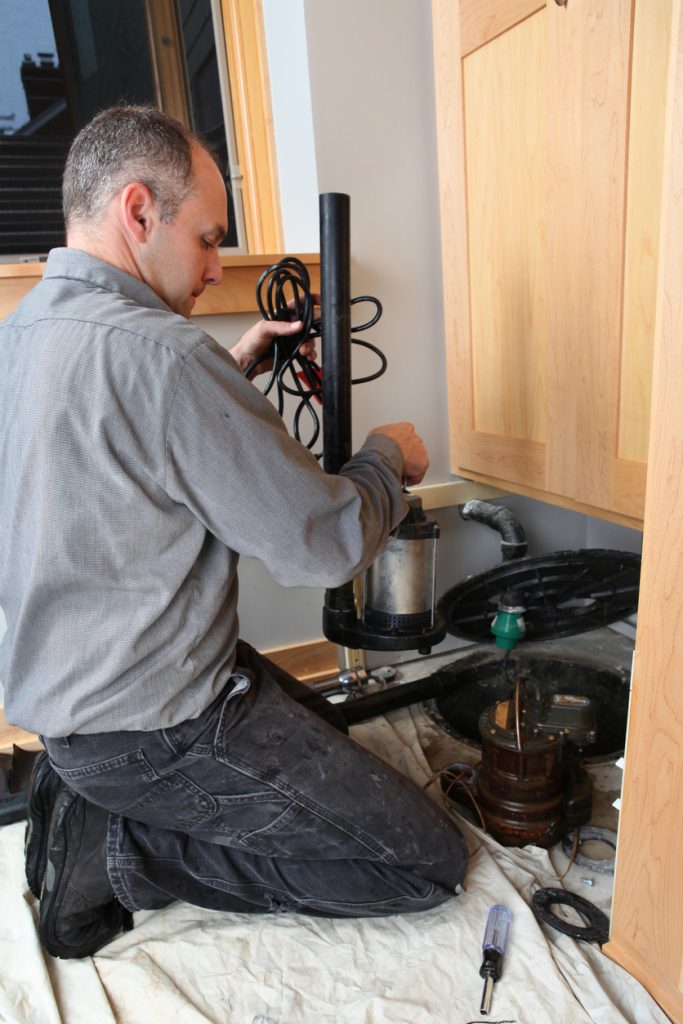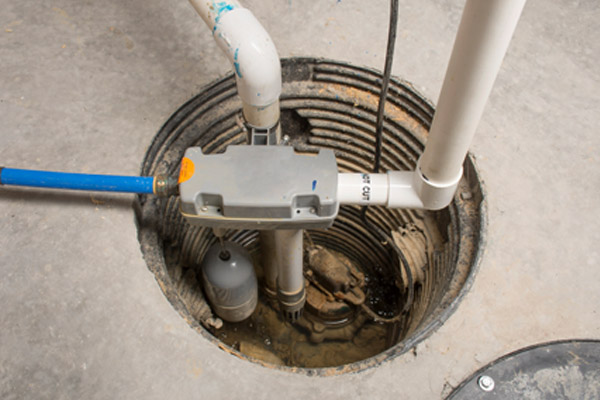Simple Methods to Keep a Sump Pump
Simple Methods to Keep a Sump Pump
Blog Article
We have stumbled on this post pertaining to Keep Your Sump Pump Clean, It'll Keep You Dry listed below on the internet and concluded it made sense to talk about it with you on this page.

Sump pumps are vital parts in several homes, specifically in areas prone to flooding or too much wetness. They aid avoid water damages by effectively eliminating excess water from basements or crawl spaces. Nevertheless, like any other appliance, sump pumps call for regular upkeep to ensure they work properly when needed one of the most. Cleansing your sump pump is an essential part of its upkeep, and comprehending exactly how to do it correctly can conserve you from pricey repairs and prospective catastrophes.
Intro
Preserving a clean sump pump is important for its correct performance and longevity. Overlooking this crucial job can lead to obstructions, breakdowns, and inevitably, water damage to your home. For that reason, learning just how to cleanse a sump pump is crucial for homeowners that depend on these devices to maintain their cellars dry and safeguarded.
Signs of a Dirty Sump Pump
Recognizing when your sump pump needs cleansing is important for avoiding possible breakdowns. Some usual signs that suggest an unclean sump pump consist of unusual sounds throughout procedure, lowered water flow, and noticeable particles in the pit. If you notice any of these signs and symptoms, it's vital to cleanse your sump pump promptly to avoid any kind of further problems.
Getting ready for Cleaning
Prior to you begin cleaning your sump pump, it's necessary to take some safety and security precautions. Beginning by turning off the power to the pump to stay clear of any electrical crashes. Furthermore, use ideal safety gear, such as gloves and goggles, to secure on your own from dust, particles, and prospective microorganisms.
Recognizing the Sump Pump
Prior to diving right into the cleaning procedure, it's necessary to have a fundamental understanding of just how a sump pump functions. Typically set up in a pit or basin below the basement flooring, a sump pump consists of a number of key elements, consisting of a pump, a float button, and a discharge pipeline. When water gathers in the pit, the float switch triggers the pump, which after that pumps the water out through the discharge pipeline, away from the building's structure.
Step-by-step Overview to Cleaning Up a Sump Pump
Shutting down the Power
Begin by detaching the power supply to the sump pump to prevent any type of mishaps while cleansing.
Checking for Appropriate Functioning
Prior to re-installing the pump, do a fast examination to make sure that the float button triggers the pump appropriately. Pour some water right into the sump pit and observe the pump's operation. If everything is functioning properly, you can reassemble the pump and reconnect the power supply.
Removing Particles and Dust
Utilize a container or an inside story to get rid of any kind of noticeable particles, dust, or sediment from the sump pit. Dispose of the particles effectively to stop it from obstructing the pump or the discharge pipeline.
Cleaning the Pump and Float Switch Over
When the pit is free from particles, thoroughly eliminate the pump from the pit. Examine the pump and the float button for any kind of signs of damage or wear. Make use of a soft brush or cloth to clean up the surfaces and remove any kind of accumulated gunk.
Purging the System
After cleaning the pump and float button, purge the sump pit with tidy water to get rid of any remaining dirt or debris. This will certainly assist make certain that the pump runs efficiently and effectively.
Upkeep Tips to Maintain Your Sump Pump Clean
In addition to periodic cleansing, there are several upkeep pointers you can comply with to keep your sump pump in optimal problem:
Conclusion
Cleansing your sump pump is a crucial aspect of its upkeep and guarantees that it operates efficiently when you need it one of the most. By adhering to the actions described in this overview and including regular upkeep into your routine, you can expand the life expectancy of your sump pump and shield your home from water damage.
6 STEPS ON HOW TO CLEAN A SUMP PUMP PROPERLY
UNDERSTANDING SUMP PUMPS
Your sump pump plays a crucial role in protecting your home by managing and removing excess water. It primarily functions as a “shield”, guarding your basement against the damaging effects of water accumulation. The pump is housed in a sump pit in the lowest part of your basement, and its job is to pump out any water that collects there.
During heavy rainfalls or when snow melts rapidly, water can infiltrate your basement, posing potential risks like flooding, structural damage, and harmful mold growth. Here, the sump pump springs into action, pumping out the intruding water and directing it away from your home.
SAFETY FIRST
Before cleaning, remember to prioritize safety. Disconnect the sump pump from the power source to prevent any accidental electric shocks. Also, wear sturdy gloves to protect your hands from any sharp or dirty components within the pump.
REMOVE THE SUMP PUMP
After ensuring your safety, the next step is to remove the sump pump from its pit. Doing this might require careful maneuvering as you don’t want to damage any pump components. Once removed, clean the sump pit to remove any accumulated debris or sludge.
INSPECT THE PUMP
Inspect the pump for any visible signs of wear or damage. Check the power cord, float switch, and impeller housing. If any components look worn out or damaged, consider replacing them to ensure optimal performance.
CLEAN THE PUMP
Thoroughly clean the pump with warm, soapy water. Make sure to rid it of any dirt, gravel, or other debris that might impede its performance. You can use a toothbrush to clean the small, hard-to-reach parts of the pump.
REINSTALL THE SUMP PUMP
Reinstall the pump into the sump pit Make sure it’s positioned correctly to remove the water effectively Once it’s back in place, reconnect it to the power source TEST THE PUMP
Finally, pour some water into the pit to ensure the pump works correctly. It should start automatically and begin pumping out the water; if it doesn’t, check the power source and the positioning of the pump.
Remember, while cleaning your sump pump is an essential part of home maintenance, hiring a professional plumber for a thorough inspection and cleaning at least once a year is also important. This will ensure that your pump is in optimal condition, ready to protect your home from potential water damage.
BEST PRACTICES FOR CLEANING SUMP PUMP DISCHARGE PIPES
Regular Inspection: Regularly inspect your discharge pipes, especially during heavy rainfall or snowmelt periods. Look for any signs of blockage or damage. Early detection of problems can prevent serious issues down the line. Periodic Cleaning: Over time, sediment and debris can accumulate in the discharge pipes, impeding the flow of water. Regular cleaning helps keep the pipes clear and functioning efficiently. You can use a high-pressure water jet to effectively clean the pipes. Insulation During Winter: In colder climates, discharge pipes can freeze, blocking the outflow of water. Protect your discharge pipes from freezing temperatures by insulating them with foam pipe insulation. This will ensure the sump pump can continue to discharge water even in freezing conditions. Proper Positioning: The discharge pipe should be positioned to direct water away from your home’s foundation. Improper positioning can lead to water seeping back into the basement. Ensure the pipe is long enough and angled correctly. Installation of a Check Valve: A check valve prevents water from flowing back into your sump pit after the pump has pushed it out. Installing a check valve helps maintain the efficiency of your sump pump and reduces the risk of flooding. Minimize Pipe Turns: Every curve or turn in the discharge pipe can decrease the efficiency of water flow. By minimizing turns and bends in your discharge pipe, you can increase the efficiency of your sump pump. https://www.fullspeedplumbing.com/how-to-clean-a-sump-pump-properly9999/

I found that post about How to Care for Your Sump Pump while browsing on the internet. Be sure to take a moment to promote this blog if you enjoyed it. I truly appreciate your readership.
Book My Estimate Report this page